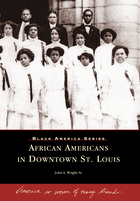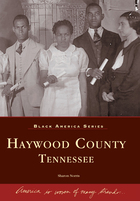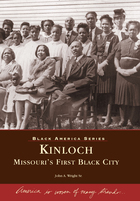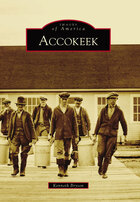Browse Titles - 1118 results
Big Picture, Episode 364, Operation Mercy
in Records of the Office of the Chief Signal Officer (RG111), of United States. National Archives and Records Administration. Federal Records, in Big Picture, Episode 364 (District of Columbia: United States. Army Pictorial Service, 1956), 27 mins
In this film presentation, the "human side" of the Army is identified in the contributions of the American soldier assigned to "Operation Mercy." Not so long ago thousands of Hungarian Freedom Fighters and their families were helped toward sanctuary in the United States. For them the gates of Camp Kilmer represent...
Sample
in Records of the Office of the Chief Signal Officer (RG111), of United States. National Archives and Records Administration. Federal Records, in Big Picture, Episode 364 (District of Columbia: United States. Army Pictorial Service, 1956), 27 mins
Description
In this film presentation, the "human side" of the Army is identified in the contributions of the American soldier assigned to "Operation Mercy." Not so long ago thousands of Hungarian Freedom Fighters and their families were helped toward sanctuary in the United States. For them the gates of Camp Kilmer represented the end to a way of life they had found oppressive and the beginning of a new life of hope and opportunity. The action moves from th...
In this film presentation, the "human side" of the Army is identified in the contributions of the American soldier assigned to "Operation Mercy." Not so long ago thousands of Hungarian Freedom Fighters and their families were helped toward sanctuary in the United States. For them the gates of Camp Kilmer represented the end to a way of life they had found oppressive and the beginning of a new life of hope and opportunity. The action moves from the early street fighting in Budapest through the last days in October when the thunderous roar of Russian tanks was stilled and the smoke cleared over the ruined city to a ship moving out of Bremerhaven toward a pier in Brooklyn. Here all Americans -- along with the United States Army -- did not turn their backs, but pitched in to do a job for the valiant men and women of Hungary. Depicted in "Operation Mercy" are the many volunteer workers of the American Red Cross and other agencies working together at Camp Kilmer and at the American Embassy in Munich.
Show more
Show less
Field of Study
American History
Content Type
Documentary
Contributor
Stuart Queen
Date Published / Released
1956
Publisher
United States. Army Pictorial Service
Series
Big Picture
Speaker / Narrator
Dwight D. Eisenhower, 1890-1969, Stuart Queen
Person Discussed
Dwight D. Eisenhower, 1890-1969
Topic / Theme
Hungarian people, Immigrant populations, Immigration and emigration, Rebellions, Refugee camps, Refugees, American History, Post-war Era (1945–1960), Hungarians, 20th Century in World History (1914--2000)
×
1. The Beginning
written by John A. Wright, Sr.; in African Americans in Downtown St. Louis, Black America (Charleston, SC: Arcadia Publishing, 2003), 9-12
Since the founding of St. Louis in 1764, Downtown St. Louis has been a center of black cultural, economic, political, and legal achievements that have shaped not only the city of St. Louis, but the nation as well. From James Beckworth, one of the founders of Denver, Colorado, to Elizabeth Keckley, Mary Todd Lincol...
Sample
written by John A. Wright, Sr.; in African Americans in Downtown St. Louis, Black America (Charleston, SC: Arcadia Publishing, 2003), 9-12
Description
Since the founding of St. Louis in 1764, Downtown St. Louis has been a center of black cultural, economic, political, and legal achievements that have shaped not only the city of St. Louis, but the nation as well. From James Beckworth, one of the founders of Denver, Colorado, to Elizabeth Keckley, Mary Todd Lincoln's seamstress and author of the only behind-the-scenes account of Lincoln's White House years, black residents of Downtown St. Louis h...
Since the founding of St. Louis in 1764, Downtown St. Louis has been a center of black cultural, economic, political, and legal achievements that have shaped not only the city of St. Louis, but the nation as well. From James Beckworth, one of the founders of Denver, Colorado, to Elizabeth Keckley, Mary Todd Lincoln's seamstress and author of the only behind-the-scenes account of Lincoln's White House years, black residents of Downtown St. Louis have made an indelible mark in American history. From the monumental Dred Scott case to entertainers such as Josephine Baker, Downtown St. Louis has been home to many unforgettable faces, places, and events that have shaped and strengthened the American experience for all.
Show more
Show less
Field of Study
American History
Content Type
Book
Author / Creator
John A. Wright, Sr.
Date Published / Released
2003
Publisher
Arcadia Publishing
Series
Black America
Topic / Theme
Settlements, Afar
Copyright Message
Copyright © 2003 by John A Wright Sr.
×
1. Early Days
written by Jennifer E. Cheeks-Collins; in Gwinnett County, Black America (Charleston, SC: Arcadia Publishing, 2002), 9-44
Sample
written by Jennifer E. Cheeks-Collins; in Gwinnett County, Black America (Charleston, SC: Arcadia Publishing, 2002), 9-44
Field of Study
American History
Content Type
Book
Author / Creator
Jennifer E. Cheeks-Collins
Date Published / Released
2002
Publisher
Arcadia Publishing
Series
Black America
Topic / Theme
Settlements, Afar
Copyright Message
Copyright © 2002 by Jennifer E. Cheeks-Collins.
×
1. Settlement and Slavery
written by Sharon Norris; in Haywood County, Black America (Charleston, SC: Arcadia Publishing, 2000), 11-20
Sample
written by Sharon Norris; in Haywood County, Black America (Charleston, SC: Arcadia Publishing, 2000), 11-20
Field of Study
American History
Content Type
Book
Author / Creator
Sharon Norris
Date Published / Released
2000
Publisher
Arcadia Publishing
Series
Black America
Topic / Theme
Slavery, Settlements, Afar
Copyright Message
Copyright © 2000 by Sharon Norris
×
1. The Beginning
written by John A. Wright, Sr.; in Kinloch: Missouri's First All Black Town, Black America (Charleston, SC: Arcadia Publishing, 2000), 9-22
Located just outside of St. Louis, Kinloch was once a community locked off from the rest of the area by natural and man-made barriers. In spite of a lack of financial resources, it once provided its residents with a school district, city hall, post office, business district, and recreational facilities. Residents...
Sample
written by John A. Wright, Sr.; in Kinloch: Missouri's First All Black Town, Black America (Charleston, SC: Arcadia Publishing, 2000), 9-22
Description
Located just outside of St. Louis, Kinloch was once a community locked off from the rest of the area by natural and man-made barriers. In spite of a lack of financial resources, it once provided its residents with a school district, city hall, post office, business district, and recreational facilities. Residents will recognize Dunbar Elementary, the oldest school for blacks in St. Louis County, Holy Angels, the oldest continuing black parish in...
Located just outside of St. Louis, Kinloch was once a community locked off from the rest of the area by natural and man-made barriers. In spite of a lack of financial resources, it once provided its residents with a school district, city hall, post office, business district, and recreational facilities. Residents will recognize Dunbar Elementary, the oldest school for blacks in St. Louis County, Holy Angels, the oldest continuing black parish in the St. Louis Archdiocese, as well as former residents Congresswoman Maxine Waters and political activist Dick Gregory. Eventually, due to insufficient revenue, this once thriving community fell into decline, and is now struggling to keep its small town values and ideals alive.
Show more
Show less
Field of Study
American History
Content Type
Book
Author / Creator
John A. Wright, Sr.
Date Published / Released
2000
Publisher
Arcadia Publishing
Series
Black America
Topic / Theme
Settlements, Afar
Copyright Message
Copyright © 2000 by John A. Wright Sr.
×
1: Will it Play at 40° Latitude, 89° Longitude?: The Southern Cross and Old, Old Man River- Chicago, Who's Your Daddy?
written by Greg Wahl and Charles A. Bobbitt; in It Didn't Play in Peoria: Missed Chances of a Middle American Town, General (Charleston, SC: Arcadia Publishing, 2009), 13-17
“Will it play in Peoria?” was an old Vaudeville phrase meaning, “Will it appeal to the average person?” The Illinois city has gained fame through the years, but more often as the butt of jokes or as an example of the typical Middle American town than through any recognition of its many accomplishments. But...
Sample
written by Greg Wahl and Charles A. Bobbitt; in It Didn't Play in Peoria: Missed Chances of a Middle American Town, General (Charleston, SC: Arcadia Publishing, 2009), 13-17
Description
“Will it play in Peoria?” was an old Vaudeville phrase meaning, “Will it appeal to the average person?” The Illinois city has gained fame through the years, but more often as the butt of jokes or as an example of the typical Middle American town than through any recognition of its many accomplishments. But it had greatness in its grasp, and more than once. Peoria boasts a string of close brushes with prosperity, any one of which could hav...
“Will it play in Peoria?” was an old Vaudeville phrase meaning, “Will it appeal to the average person?” The Illinois city has gained fame through the years, but more often as the butt of jokes or as an example of the typical Middle American town than through any recognition of its many accomplishments. But it had greatness in its grasp, and more than once. Peoria boasts a string of close brushes with prosperity, any one of which could have made it a Chicago or a St. Louis. Charles Lindbergh, for example, first approached Peoria for backing for his historic flight, but the town’s moneymen refused him and his Spirit of Peoria, perhaps losing a chance at the airline industry as well.
Show more
Show less
Field of Study
American History
Content Type
Book
Author / Creator
Greg Wahl, Charles A. Bobbitt
Date Published / Released
2009
Publisher
Arcadia Publishing
Series
General
Topic / Theme
Geophysical features, Settlements
Copyright Message
Copyright © 2009 by Greg Wahl and Charles Bobbitt
×
1. The Owens Era
written by Jim Harnedy and Jane Diggins Harnedy; in Campobello Island, Historic Canada (Charleston, SC: Arcadia Publishing), 9-12
During its long, legendary history, Campobello Island has been known by many names: the Native American word for it was Abahquict, French explorers called it Port aux Coquilles, and the English named it Outer Island. Campobello rises on the outer edge of Passamaquoddy Bay just across the water from Eastport, Maine...
Sample
written by Jim Harnedy and Jane Diggins Harnedy; in Campobello Island, Historic Canada (Charleston, SC: Arcadia Publishing), 9-12
Description
During its long, legendary history, Campobello Island has been known by many names: the Native American word for it was Abahquict, French explorers called it Port aux Coquilles, and the English named it Outer Island. Campobello rises on the outer edge of Passamaquoddy Bay just across the water from Eastport, Maine, and only a stone's throw away from the Narrows at Lubec, Maine. Campobello Island features rare historical photographs gleaned from t...
During its long, legendary history, Campobello Island has been known by many names: the Native American word for it was Abahquict, French explorers called it Port aux Coquilles, and the English named it Outer Island. Campobello rises on the outer edge of Passamaquoddy Bay just across the water from Eastport, Maine, and only a stone's throw away from the Narrows at Lubec, Maine. Campobello Island features rare historical photographs gleaned from the collection of the Campobello Public Library and Museum, other archives, and private collections of many local families. The book chronicles the century-long rule of the Owen family, depicts the fishing villages of Welshpool and Wilson's Beach, salutes the island's military heroes, and captures the faces of countless residents, including the Roosevelts, who were members of the summer colony for more than half a century. The story of "Sunrise at Campobello" rounds out this extraordinary history.
Show more
Show less
Field of Study
American History
Content Type
Book
Author / Creator
Jim Harnedy, Jane Diggins Harnedy
Publisher
Arcadia Publishing
Series
Historic Canada
Person Discussed
William Owen, 1737-1778
Topic / Theme
Islands, Settlements
Copyright Message
Copyright © 2002 by Jim Harnedy and Jane Diggins Harnedy/Campobello Public Library
and Museum
×
1. Early Days
written by Kenneth Bryson; in Accokeek, Images of America (Charleston, SC: Arcadia Publishing, 2013), 9-18
Accokeek is an unincorporated place in the southwest corner of Prince George’s County. The name “Accokeek” is an Algonquian word meaning “at the edge of the hill.” Before the arrival of Capt. John Smith in 1623, indigenous people had occupied the area intermittently for thousands of years. After an initi...
Sample
written by Kenneth Bryson; in Accokeek, Images of America (Charleston, SC: Arcadia Publishing, 2013), 9-18
Description
Accokeek is an unincorporated place in the southwest corner of Prince George’s County. The name “Accokeek” is an Algonquian word meaning “at the edge of the hill.” Before the arrival of Capt. John Smith in 1623, indigenous people had occupied the area intermittently for thousands of years. After an initial increase in the European population and a corresponding decline in the number of American Indians, the population of Accokeek stabil...
Accokeek is an unincorporated place in the southwest corner of Prince George’s County. The name “Accokeek” is an Algonquian word meaning “at the edge of the hill.” Before the arrival of Capt. John Smith in 1623, indigenous people had occupied the area intermittently for thousands of years. After an initial increase in the European population and a corresponding decline in the number of American Indians, the population of Accokeek stabilized. The area could be described as a rural community in harmony with nature. Since World War II, the size and diversity of the population have changed rapidly. In 1942, Indian Head Naval Reservation Access Road was constructed. The major highway passes through Accokeek and connects residents to federal government jobs in Indian Head to the south and Washington, DC, to the north. Today, Accokeek citizens continue efforts to preserve the natural environment and historical landmarks from development.
Show more
Show less
Field of Study
American History
Content Type
Book
Author / Creator
Kenneth Bryson
Date Published / Released
2013
Publisher
Arcadia Publishing
Series
Images of America
Topic / Theme
Settlements
Copyright Message
Copyright © 2013 by Kenneth Bryson
×
1. The Past
written by Donald R. Williams; in Adirondack People and Places, Images of America (Charleston, SC: Arcadia Publishing), 9-38
New York's mountainous Adirondack region, once considered foreboding and impassable, has evolved during the last three centuries into a desirable place for people to live and visit. Native Americans, trappers, hunters, and anglers first arrived to tap the wilderness resources offered by the Adirondack Mountains. L...
Sample
written by Donald R. Williams; in Adirondack People and Places, Images of America (Charleston, SC: Arcadia Publishing), 9-38
Description
New York's mountainous Adirondack region, once considered foreboding and impassable, has evolved during the last three centuries into a desirable place for people to live and visit. Native Americans, trappers, hunters, and anglers first arrived to tap the wilderness resources offered by the Adirondack Mountains. Lumbermen, miners, and tannery workers settled the back woodlands to harvest the logs, dig the minerals, and collect the hemlock bark. O...
New York's mountainous Adirondack region, once considered foreboding and impassable, has evolved during the last three centuries into a desirable place for people to live and visit. Native Americans, trappers, hunters, and anglers first arrived to tap the wilderness resources offered by the Adirondack Mountains. Lumbermen, miners, and tannery workers settled the back woodlands to harvest the logs, dig the minerals, and collect the hemlock bark. Others came to clear trees and farm the land, and settlements soon dotted the landscape. The travelling public found the healthy, pure air and the beautiful mountains with miles of waterways a welcomed alternative to the hot, smoky cities. The tourist industry grew and flourished with hotels, cabins, cottages, summer homes, and wealthy estates spreading throughout the six million acres of Adirondack Park. Communities also continued to thrive as visitors found the area impossible to leave. Adirondack People and Places celebrates this mountainous country where the wilderness truly became a place for people.
Show more
Show less
Field of Study
American History
Content Type
Book
Author / Creator
Donald R. Williams
Publisher
Arcadia Publishing
Series
Images of America
Topic / Theme
Lumber industry, Logging, Lumber mills, American Indians, Modes of transportation, Settlements, African Americans
Copyright Message
Copyright © 2012 by Donald R. Williams
×
1. The Beginning: Territorial Days to the Turn of the Century
written by Sherri Camp; in African American Topeka, Images of America (Charleston, SC: Arcadia Publishing, 2013), 9-18
African Americans arrived in Topeka right before and after the Civil War and again in large numbers during the Exodus Movement of 1879 and Great Migration of 1910. They came in protest of the treatment they received in the South. The history of dissent lived on in Topeka, as it became the home to court cases prote...
Sample
written by Sherri Camp; in African American Topeka, Images of America (Charleston, SC: Arcadia Publishing, 2013), 9-18
Description
African Americans arrived in Topeka right before and after the Civil War and again in large numbers during the Exodus Movement of 1879 and Great Migration of 1910. They came in protest of the treatment they received in the South. The history of dissent lived on in Topeka, as it became the home to court cases protesting discrimination of all kinds. African Americans came to the city determined that education would provide them a better life. Black...
African Americans arrived in Topeka right before and after the Civil War and again in large numbers during the Exodus Movement of 1879 and Great Migration of 1910. They came in protest of the treatment they received in the South. The history of dissent lived on in Topeka, as it became the home to court cases protesting discrimination of all kinds. African Americans came to the city determined that education would provide them a better life. Black educators fostered a sense of duty toward schooling, and in 1954 Topeka became a landmark for African Americans across the country with the Brown vs. Topeka Board of Education case. Blacks from every walk of life found refuge in Kansas and, especially, Topeka. The images in African American Topeka have been selected to give the reader a glimpse into the heritage of black life in the community. The richness of the culture and values of this Midwestern city are a little-known secret just waiting to be exhibited.
Show more
Show less
Field of Study
American History
Content Type
Book
Author / Creator
Sherri Camp
Date Published / Released
2013
Publisher
Arcadia Publishing
Series
Images of America
Topic / Theme
Settlements, Afar
Copyright Message
Copyright © 2013 by Sherrita Camp
×










